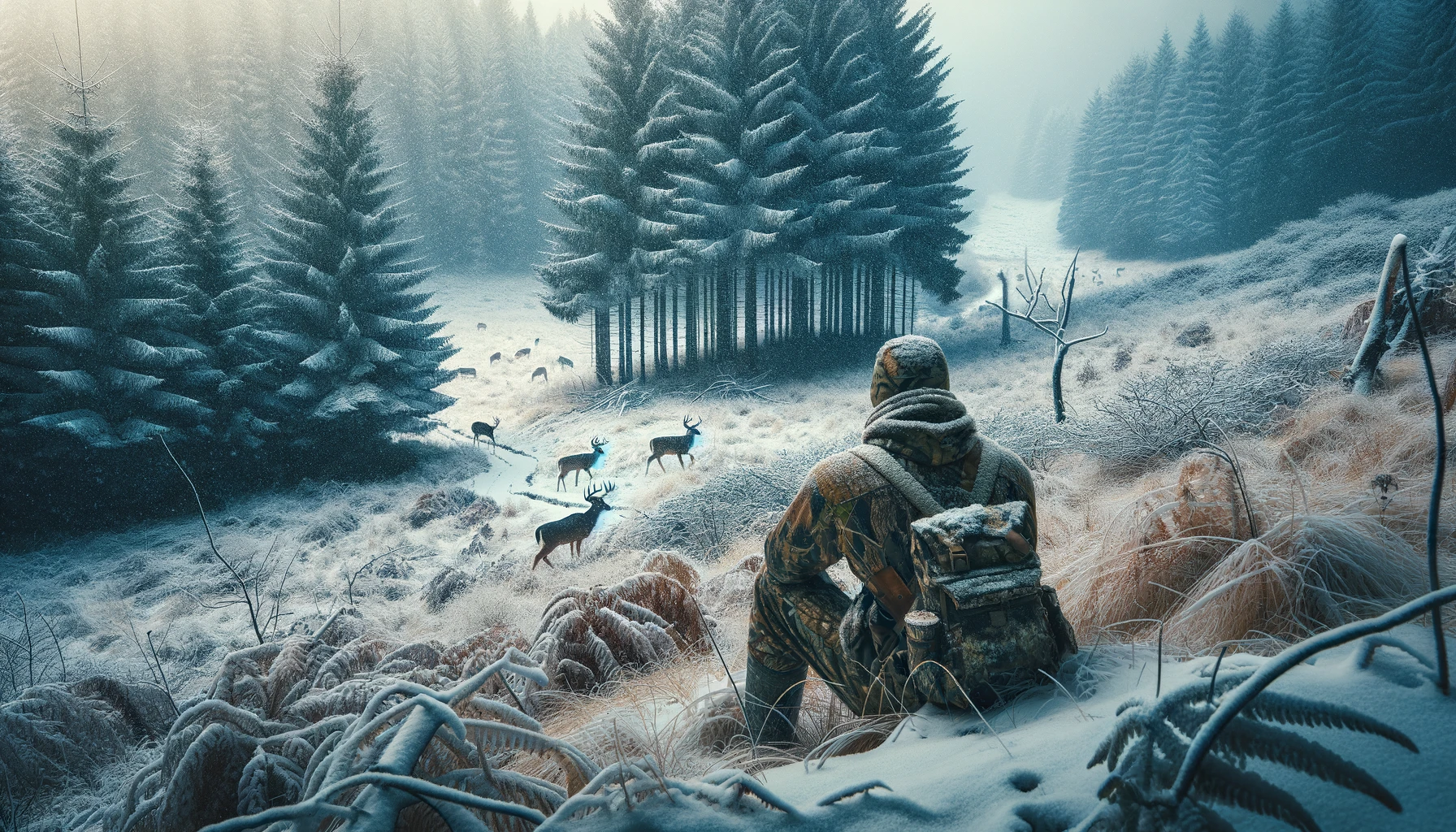
Table of Contents
Late season deer hunting presents a unique set of challenges and opportunities. As the landscape transforms with the arrival of colder weather, so too do the behaviors of deer, necessitating adjustments in hunting strategies. This guide explores effective tactics for late season deer hunting, helping you to adapt to the changes and increase your chances of success during the winter months.
With the chill setting in, food becomes scarce, and deer concentrate around remaining food sources. Identifying these areas, such as stands of acorns, agricultural leftovers, or green plots, is critical. Deer will prioritize easy-to-access, high-energy foods to conserve energy.
Deer seek sheltered bedding areas to protect themselves from harsh weather. Thick conifer stands or south-facing slopes that offer protection from the north wind and capture sunlight can be hotspots for late-season hunting.
Late season deer hunting requires patience, preparation, and a deep understanding of deer behavior in winter conditions. By focusing on key resources like food and shelter, employing careful tactics, and respecting the wildlife and environment, hunters can find success and fulfillment in the challenge of late season hunting.
Look for areas with leftover agricultural crops, oak stands still holding acorns, or managed food plots that provide winter forage.
Opt for camouflage that matches the winter environment, such as patterns with bare trees, snow, or mixed terrain elements.
While deer are less responsive to calls or rattling late in the season, these techniques can still be effective in the right circumstances, especially during any secondary rut phases.
Wind direction remains crucial. Deer rely heavily on their sense of smell, especially when other senses may be hampered by winter conditions.
Analyze your experiences to learn what worked and what didn’t. Late season hunting is challenging, and each outing provides valuable insights for future hunts.
Hunting isn’t just a sport it’s a legacy of stewardship, respect for nature, and hands-on…
If you’re new to hunting or target shooting, choosing the right rifle scope can feel…
If you're out bowhunting, you know that estimating yardage isn’t just helpful it’s essential. A…
Table of Contents Introduction Gun ownership laws and regulations in the United States vary from…
For hunters and shooting enthusiasts, having a secure and organized way to transport firearms is…
When the hunting season approaches, every serious bowhunter knows: your bow isn’t just gear it’s…
This website uses cookies.